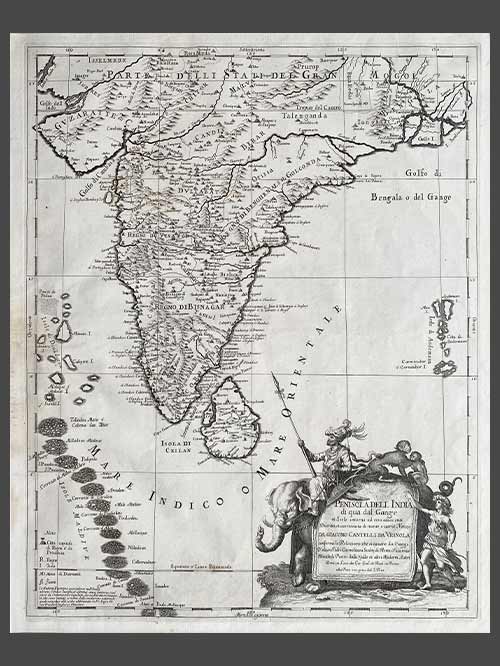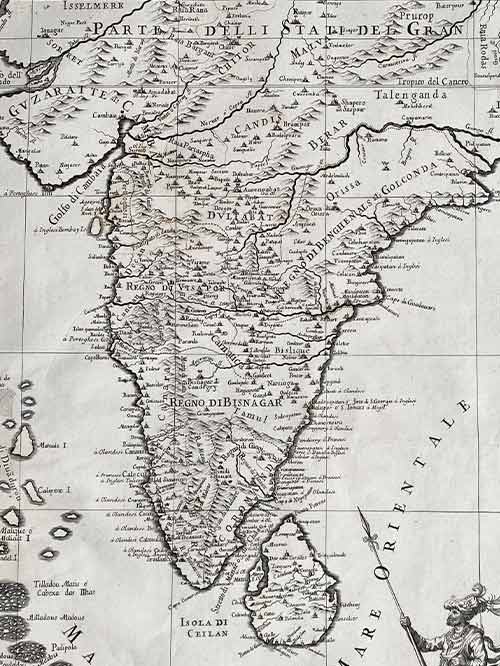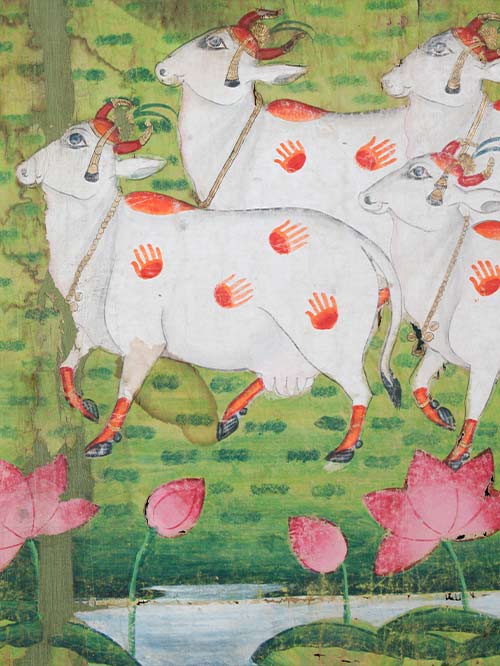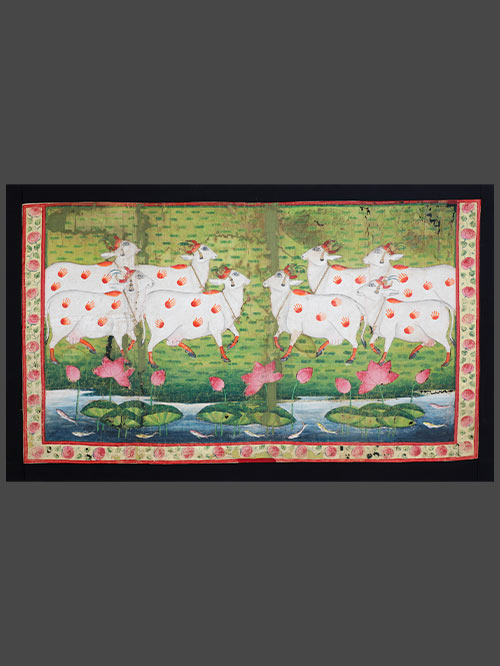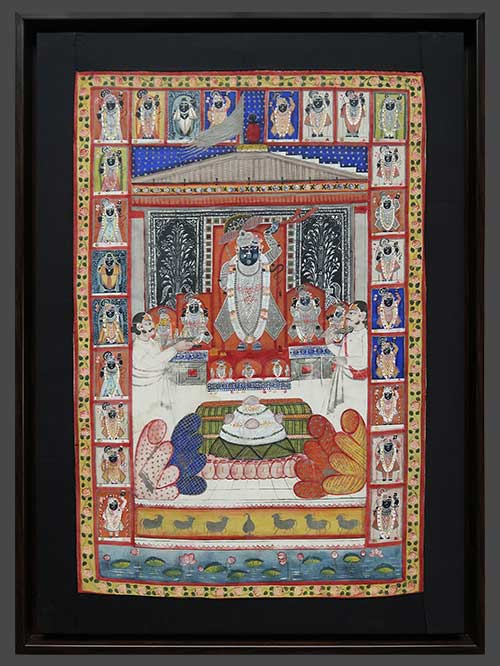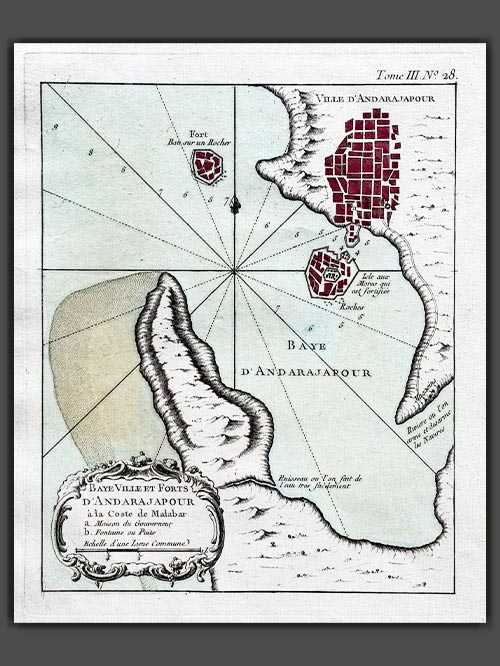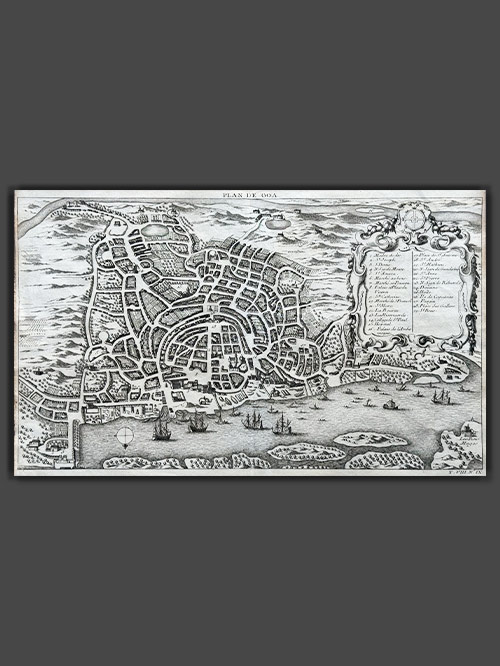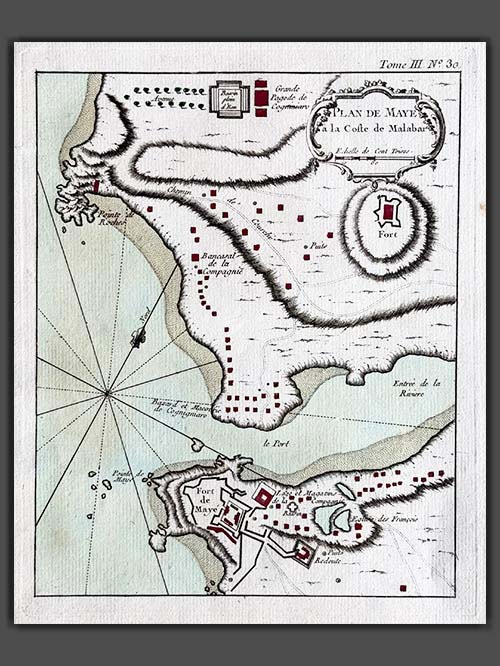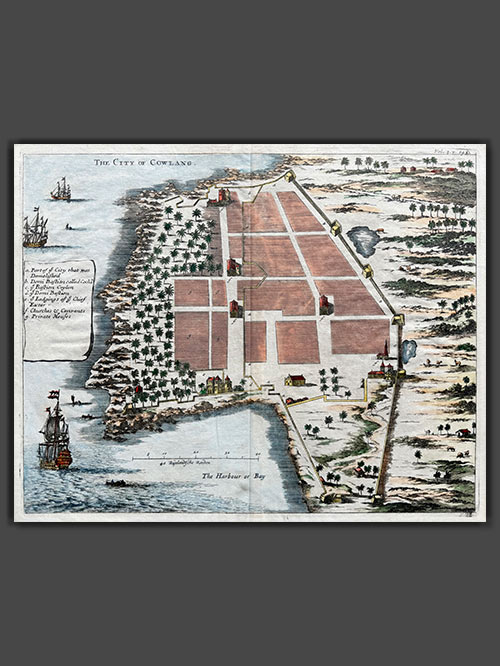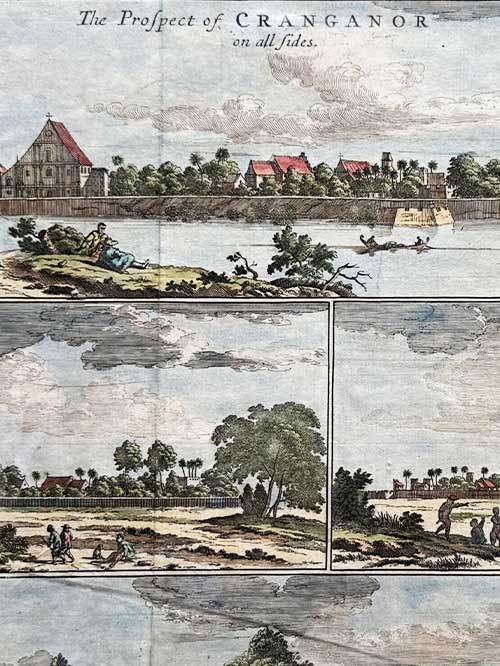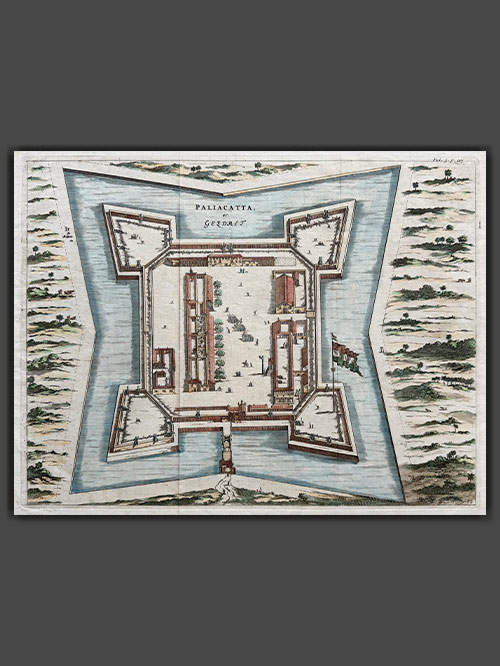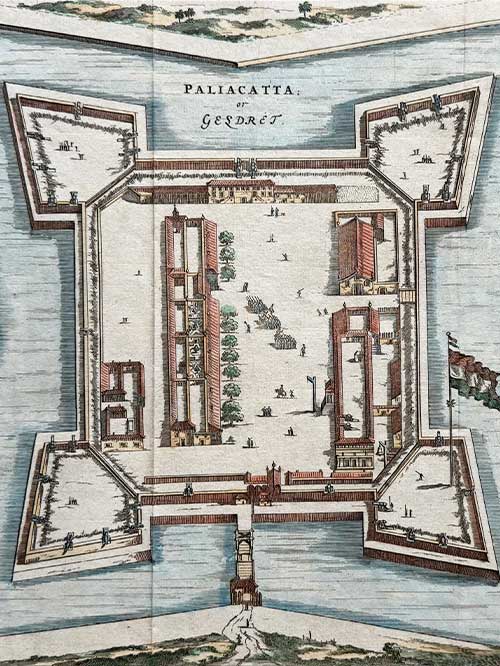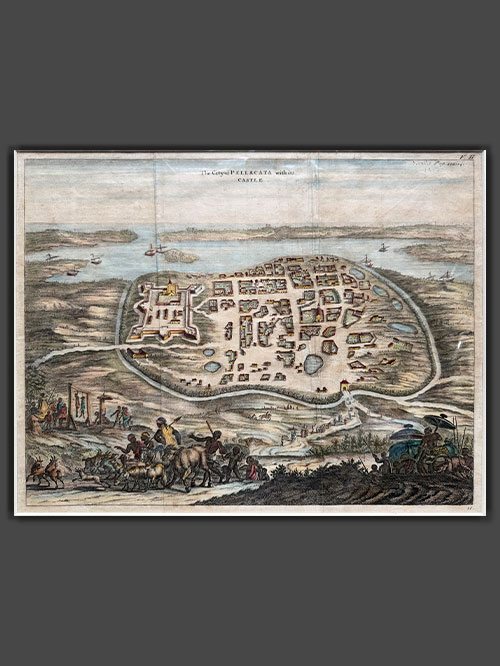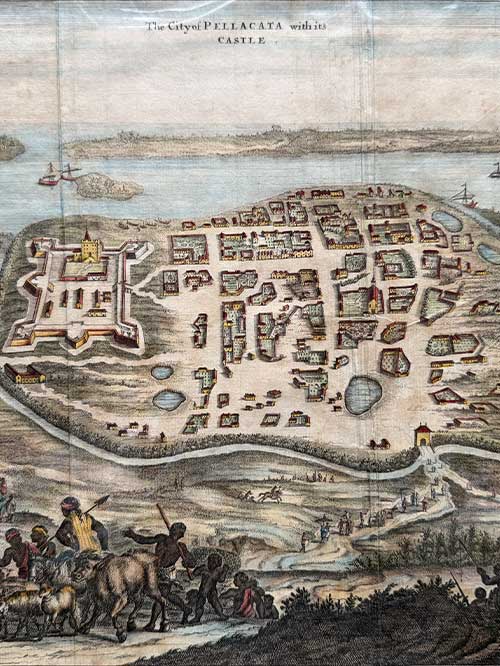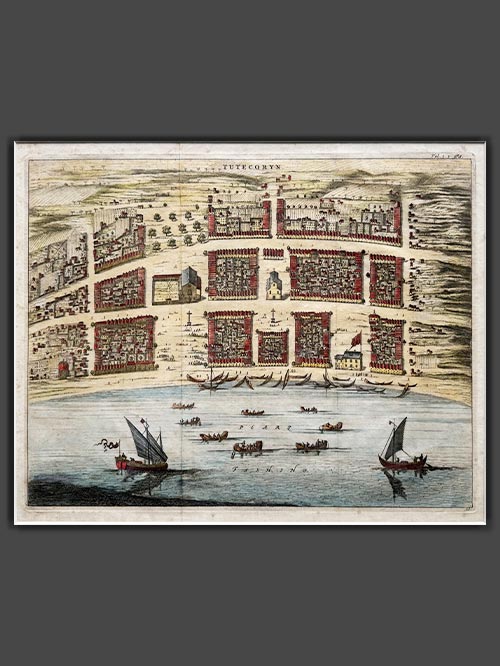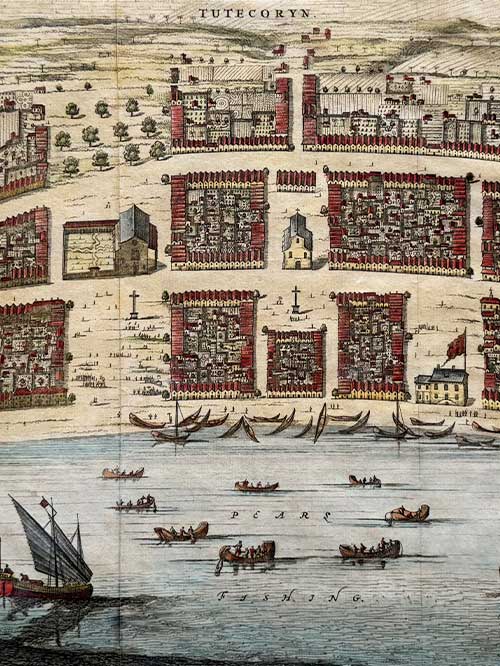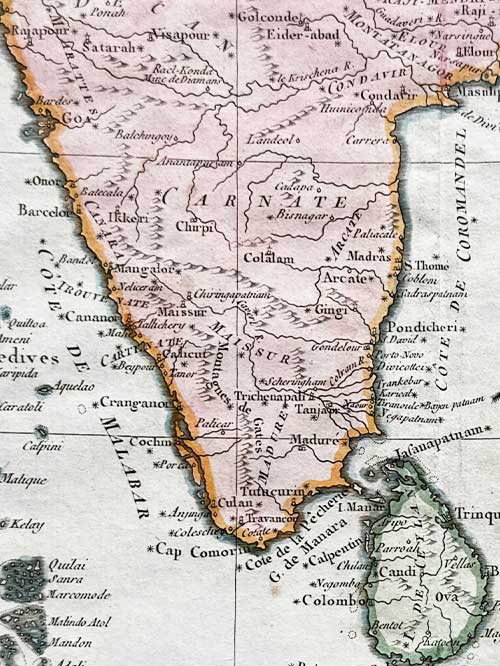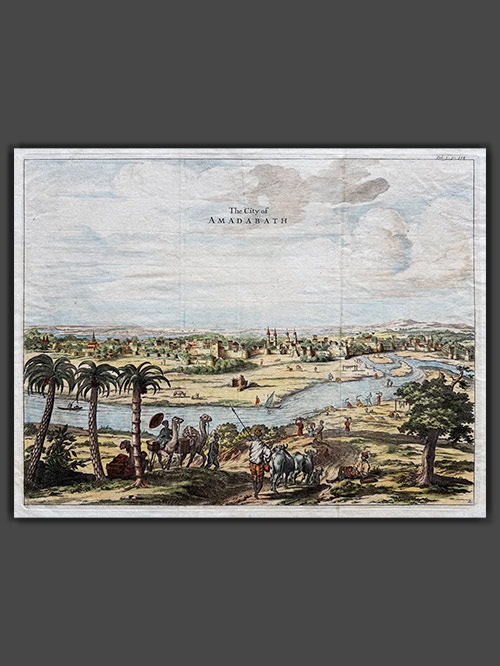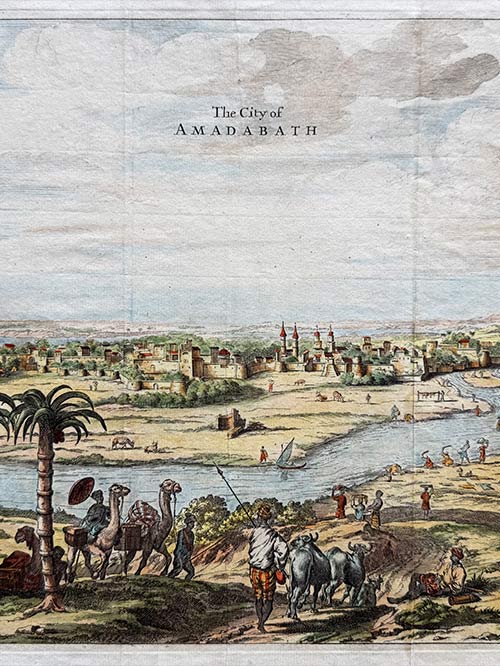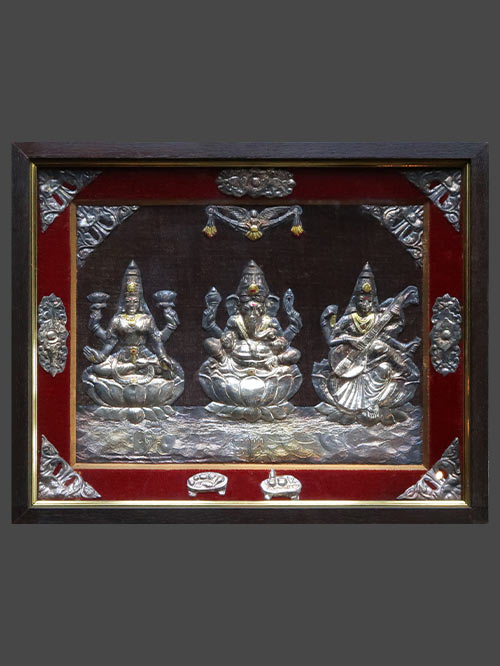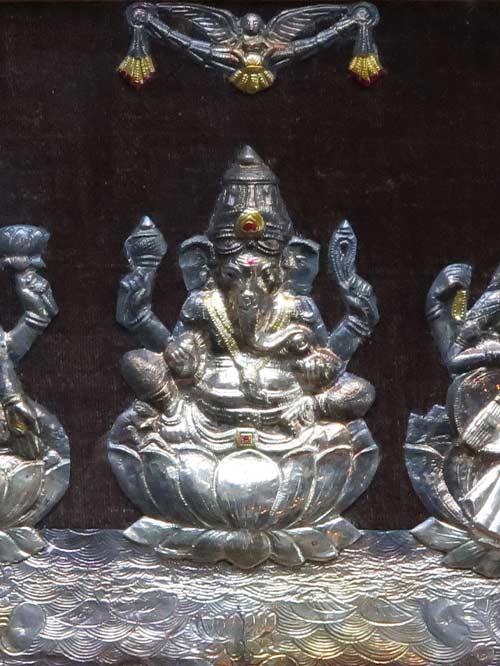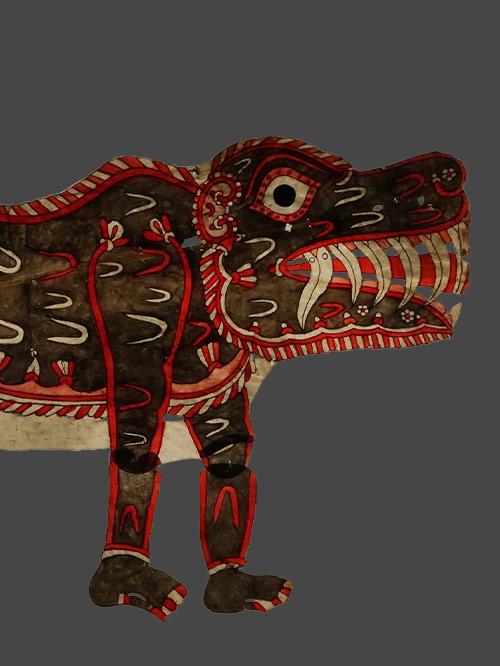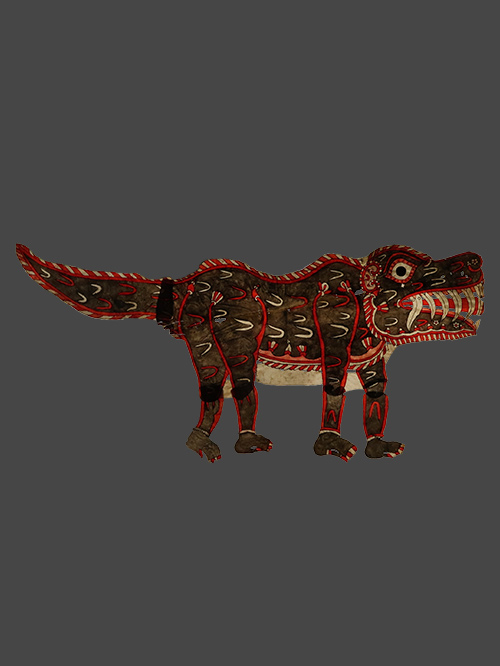Peninsular of India
Pub. Rome by Giacomo Giovanni Rossi
Original engraved map
The scarce decorative map of India, Ceylon, the Maldives, and neighbouring regions, created by Cantelli da Vignola and published in Rome by Rossi, offers one of the most detailed depictions of the area from that period. It features an ornate cartouche adorned with an elephant. The map was published in the ‘Mercurio geografico’ collection of maps, published between 1660 and 1730 by the De Rossi typography. The maps in the collection are exquisitely copied and engraved by renowned artisans of the time and also include works of esteemed cartographers such as Michele Antonio Baudrand, Nicolas Sanson and Giovanni Antonio Magini.
Cantelli, a geographer and cartographer from Montorsello near Vignola, began his journey in Bologna, where he pursued humanistic studies. In 1669, he became the secretary to Marquis Obizzo da Ferrara before traveling to Venice and eventually Paris. There, he established connections with prominent French geographers of the time, including Du Val, Nicola Sanson, and Michel Antoine Baudrand. Cantelli collaborated with the renowned De Rossi cartographic workshop, which published most of his maps. With a growing reputation as a skilled cartographer, Cantelli caught the attention of Pope Innocent XI and the Duke of Modena and Reggio Francesco II d’Este, both of whom sought him as their official cartographer. He chose to work for Francesco II and was appointed court geographer in November 1685. Over the following years, he produced numerous maps of European countries and territories. The majority of his maps were featured in the well-known Mercurio Geografico atlas, published in Rome by the De Rossi family.
Size (cms): 55(H) x 44(W)
Size (inches): 21.5(H) x 17.5(W)
Mounted Size (cms): 75(H) x 64(W)
Mounted Size (inches): 29.5(H) x 25(W)

